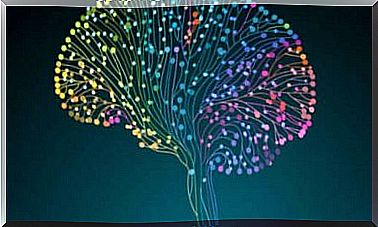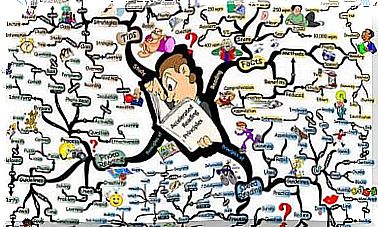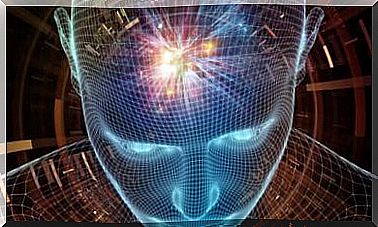The Many Faces Of Dementia
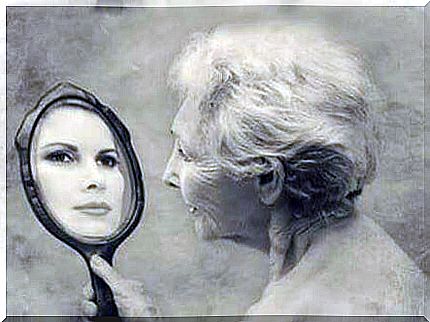
Dementia has many faces, many ways of showing us how horrible it can be to forget. Although, in general, the best known type of dementia is Alzheimer’s, it is not the only one that exists, only the most common.
Furthermore, contrary to popular belief, not all dementias are irreversible. Some, such as B12 deficiency dementia or dementia caused by vasculitis, hypothyroidism or hydrocephalus, can be treated and even cured if the causes are identified in time.
Nowadays, dementias are included in the DSM-5 as Neurocognitive Disorders, along with delirium, amnestic disorders and other neurocognitive disorders. These disorders are those in which the loss or cognitive impairment is not present from birth or early childhood, therefore in these subjects there is a worsening, visible if the current state of the patient is compared to the previous ones.

Alzheimer’s disease
It is a degenerative brain disease whose causes are still unknown. It usually begins gradually and involves continuous, slow and progressive deterioration, lasting, on average, 8 to 10 years. For now, this disease cannot be cured. Alzheimer’s develops in three stages:
Initial stage (about 2 to 4 years)
This disease usually occurs suddenly and its main feature is a deterioration of recent memory, that is, that part of memory that deals with what is happening in the present moment, which means that the patient will have difficulty remembering daily chores. and in learning.
From the point of view of language, it is normal to experience a loss of one’s vocabulary, since it is difficult to find words (anomia), a condition that is often tried to remedy through the use of periphrases (going around the same topic) and paraphrase (the substitution of one word for another in a similar context).
It is also possible to suffer from personality changes, such as apathy (i.e. fatigue or lack of interest in doing things), irritation, aggression, stiffness (inability to be flexible with one’s thoughts, i.e. being obsessed with an idea and, no matter how hard you try to make him think, the idea will not change), etc.
Emotional alterations, such as anxiety or depression, may also occur , sometimes due to the patient’s awareness of the onset of the disease, especially if he notices memory problems. In these moments, dementia sufferers and their families must find a way to adapt to the new life that awaits them – a challenge that involves stress and, at the same time, a lot of pain.

Second phase (about 3 to 5 years)
Intellectual deterioration worsens and the first symptoms of aphasus-apraxus-agnotic syndrome begin to appear, which consists of frequent forgetfulness, difficulty in carrying out simpler activities, such as dressing or bathing, which requires constant supervision, and difficulty in recognizing family members and objects.
In this phase one also suffers from retrograde amnesia, or the inability to remember past events, which one tries to remedy with confabulation, which consists in inventing facts that have never happened to fill the white spaces present in one’s memory. but without the intention of lying.
Judgment also suffers a deterioration, which makes patients more impulsive and unable to distinguish right from wrong, behaviors to be adopted in private or in public, etc. Furthermore, abstract thinking is compromised, which implies the inability to solve problems and plan different activities.
The rest of the symptoms worsen and it is possible to witness the appearance of psychotic symptoms (hallucinations such as, for example, saying that they have been with their mother, when in fact she has long since died, and delusions, such as saying that someone steals their objects , when the patient himself loses them).
At this stage, it is now impossible to orient oneself both in time (hours, days, months or years in which one is) and in space (place where one lives, different rooms of the house, etc.). Alzheimer’s sufferers are unable to survive without the supervision of others at this point, even though they are still able to cope with daily activities.
Third phase (variable duration)
At this stage, the patient does not recognize himself in the mirror, because he believes he is younger than his own reflection, and does not even recognize the people closest to him. His language becomes slower and, little by little, there is silence.
You suffer from severe impaired movement (walking with small steps and dragging your feet is typical), which can lead to falls, and you end up developing movement apraxia, i.e. the inability to walk because you can’t remember how to do it. At this stage, the patient needs help to carry out all their activities and usually ends up being forced to stay in bed.
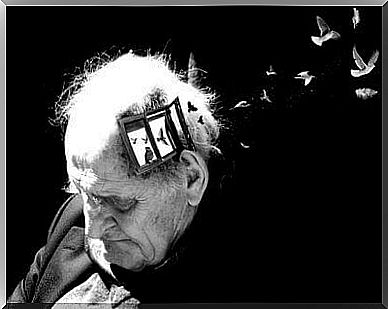
Lewy body dementia
Lewy body dementia is one of the most difficult dementias to distinguish, as well as being one of the last to be discovered. This is due to the fact that it manifests itself with many typical symptoms of Alzheimer’s and Parkinson’s, and that is why its diagnosis is often confused with that of these two other diseases, even if, nowadays, the second type it is considered the most common.
So let’s see what its main symptoms are:
- Aphasus-aprax-agnotic syndrome : typical of Alzheimer’s, this syndrome involves frequent forgetfulness, difficulty in carrying out the simplest activities and in recognizing family members or objects. In this case, however, evident variations in attention and alertness occur.
- Complex and recurrent visual hallucinations, as well as auditory hallucinations and delusions. Symptoms of REM sleep behavior disorder (which can occur very quickly) are very common, as are hallucinations in other sensory dimensions, depression and delusions.
- Parkinson’s symptoms: These are typical symptoms of Parkinson’s disease, such as tremors and stiffness in the limbs.
Spontaneous Parkinson’s symptoms begin after the first cognitive worsening and more severe neurocognitive deficits begin to be noticed at least 1 year before the motor symptoms. They also need to be distinguished from antipsychotic-induced side effects (motor symptoms due to drugs taken to fight hallucinations and delusions), as up to 50% of patients with Lewy body neurocognitive disorder are very sensitive to drugs.
Often one suffers from recurrent and syncope falls, transient loss of consciousness, accompanied by a momentary paralysis of heart and breathing movements due to a lack of blood flow to the brain, as well as unexplained passing episodes of loss of consciousness.
Vascular dementia
Vascular dementia is caused by small cerebrovascular accidents (strokes) over an extended period of time. These vascular accidents consist of a blockage or interruption of blood flow in an area of the brain, resulting in neuronal death in the affected area.
For this reason, this disease is characterized by a progressive deterioration whose symptoms are difficult to predict, as they depend on the affected area of the brain. Despite this, at the beginning of the disease, it is normal to suffer from frequent forgetfulness, orientation problems and possible personality changes or language difficulties.
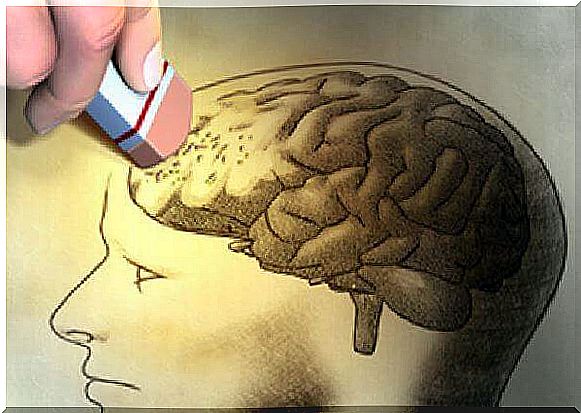
Parkinson’s dementia
It is important to distinguish between Parkinson’s dementia and Parkinson’s disease. Parkinson’s disease is characterized by tremors of the hands, arms, legs, jaw and face, stiffness in the arms, legs and torso, slowness of movement, and problems with balance and coordination.
Parkinson’s dementia, on the other hand, presents the typical tremors of Parkinson’s disease, but accompanied by a cognitive deterioration of higher functions and very serious emotional alterations. For example, it is common to find patients with this type of dementia in a severe state of depression.
It is different from previous types of dementia because it does not have aphasus-aprax-agnotic syndrome, as is the case with Alzheimer’s, and because delusions are not as obvious or as common as in the case of Lewy body dementia. On the other hand, cognitive slowness and body tremors are noted.
In this article we have described the most common types of irreversible dementia, but there are also others, among which we find frontotemporal dementias (among which the most common is Pick’s dementia), Huntington’s disease, dementia due to HIV or dementia caused by prions.

